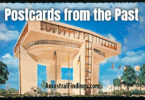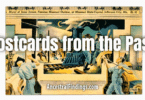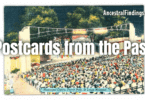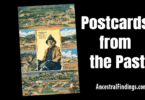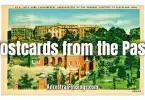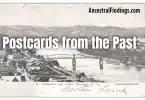A Window into Manhattan’s Golden Nights
This postcard captures more than just a location. It holds a slice of New York City’s vibrant nightlife in the early 1900s, frozen in time. Dozens of sharply dressed men and women fill every inch of the dining hall at Churchill’s, a legendary supper club at the corner of Broadway and 49th Street. Their expressions vary—some smiling, some thoughtful, some lost in the moment. There’s elegance, mystery, and a hum of excitement you can almost hear.
When you look closely, you begin to wonder: Who were these people? What brought them there that night? Did any of them appear in your family tree? This is the kind of image that invites us not only to observe history, but to feel it—and maybe even find ourselves in it.
The Glamour of Churchill’s Restaurant
Churchill’s was more than a restaurant. It was a stage for the social elite, tucked right in the heart of Manhattan’s Theater District during the city’s rise as the entertainment capital of the world. Charles “Charlie” Churchill, its namesake, was a well-known maître d’ who had made a name for himself at Martin’s Restaurant before launching his own venue.
Everything about Churchill’s was theatrical. The interior was dressed in marble, velvet, and mahogany. A live orchestra played while diners enjoyed performances alongside their meals. For warm nights, a rooftop garden offered fresh air and moonlight. To dine at Churchill’s was to step into a scene that felt scripted and grand—yet undeniably real.
By 1910, this was one of the places to be. Whether you were a Broadway producer, a visiting industrialist, or a couple celebrating an anniversary, Churchill’s promised a night to remember.
Observing the Guests in the Crowd
The real story behind this postcard is found in the faces. A gentleman with a curled mustache raises his glass, a woman nearby rests her chin in thought, and others lean close to share private conversations. This wasn’t a staged publicity photo. It was a candid moment—captured at the height of a bustling evening.
What makes this especially powerful for family historians is that these people weren’t models or actors. They were real guests, living real lives. One of them might have been your great-grandfather entertaining clients. Another could have been your great-aunt, stopping by after a matinee performance. This isn’t a page from a history book—it’s a living record of real individuals caught in a moment that meant something to them.
A Postcard Meant to Travel—But Kept as a Treasure
The back of the postcard offers one small clue: “We furnish the stamp.” That phrase suggests it was meant to be mailed, perhaps as a souvenir from a memorable night. But in this case, it never was. Someone held onto it instead. Maybe they planned to send it and forgot—or maybe they just couldn’t bring themselves to part with it. The event was worth remembering, and the card became a personal keepsake.
Printed by The Valentine-Souvenir Co., a well-known publisher at the time, this postcard was one of many created to capture iconic New York scenes. Few survive in such clear condition today.
How This Scene Connects to Family History
For anyone tracing family lines through New York City during the early 20th century, this postcard is a treasure. If your ancestors lived in or visited Manhattan during that time, they likely knew about Churchill’s. They may have dined there, worked behind the scenes, or even performed for its guests.
When researching family history, it’s easy to rely solely on records—birth dates, passenger lists, draft cards—but those documents often leave out the color and texture of daily life. Postcards like this one help fill in the missing details. They show us what a night out looked like, how people dressed, how they gathered, and how they celebrated.
And even if you can’t connect a specific name to this image, it still tells part of the larger story. These were the surroundings your ancestors may have known. This was the mood, the fashion, the social pulse of their time.
Preserving the Life Behind the Lens
Churchill’s didn’t survive the changes brought on by Prohibition. Like so many of New York’s once-famous venues, it faded from the map. But its memory lives on in images like this—and in the lives of those who walked through its doors.
As family historians, we’re always searching for more than just facts. We want to understand the lives behind the names. This postcard is one more piece of that puzzle. It reminds us that the past isn’t just dates and documents. It’s people. It’s moments. It’s nights like this—full of conversation, music, and laughter—that shaped the stories we inherit.

